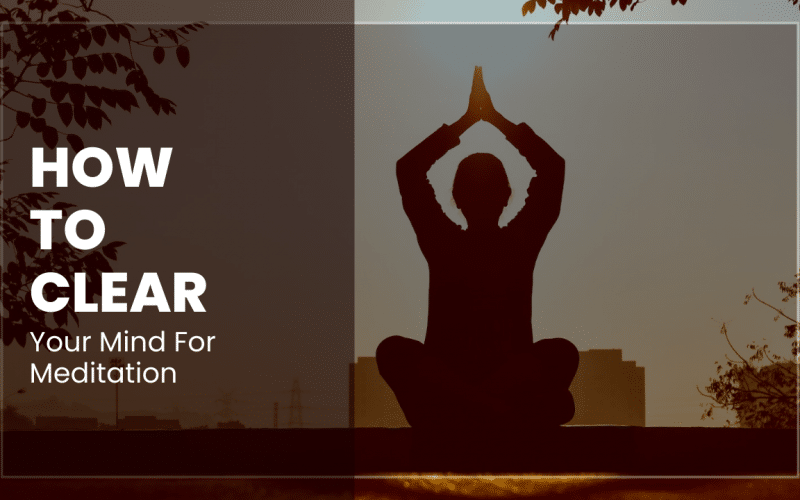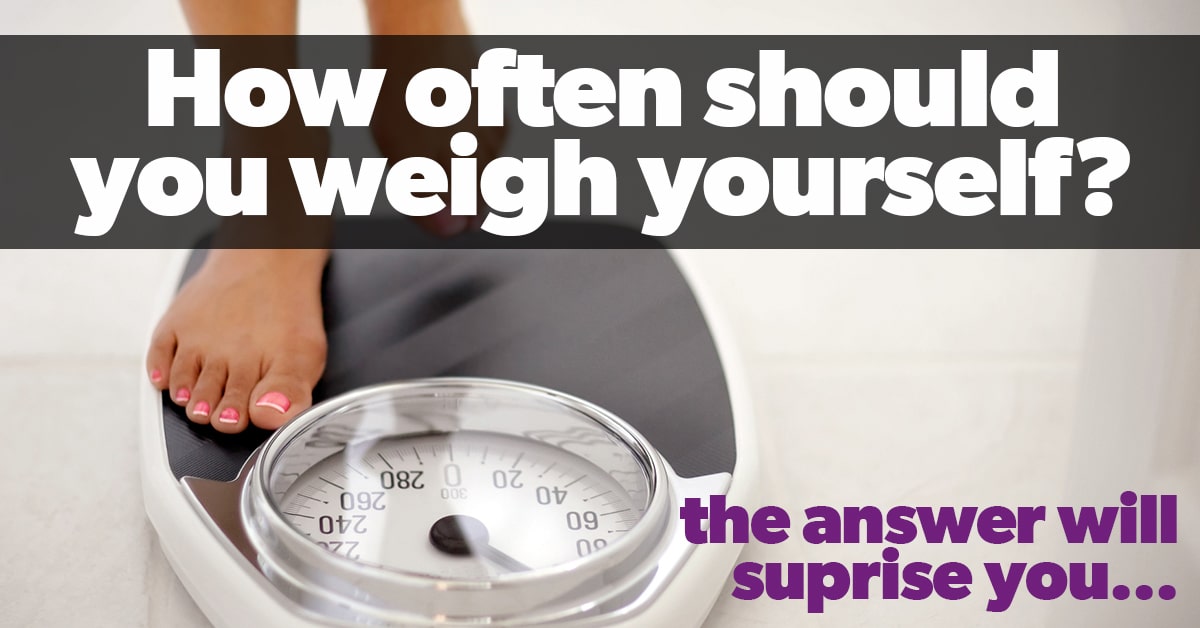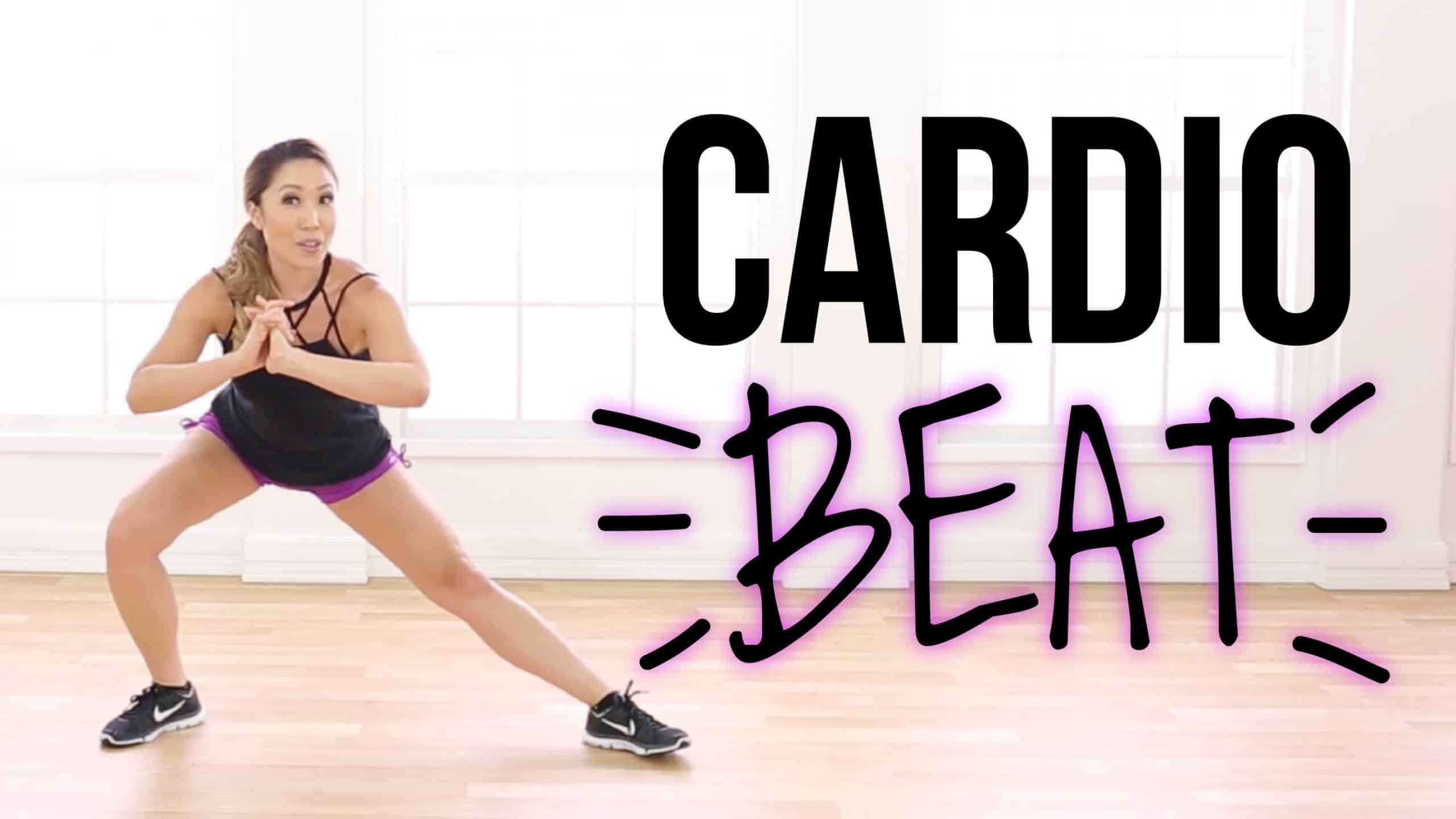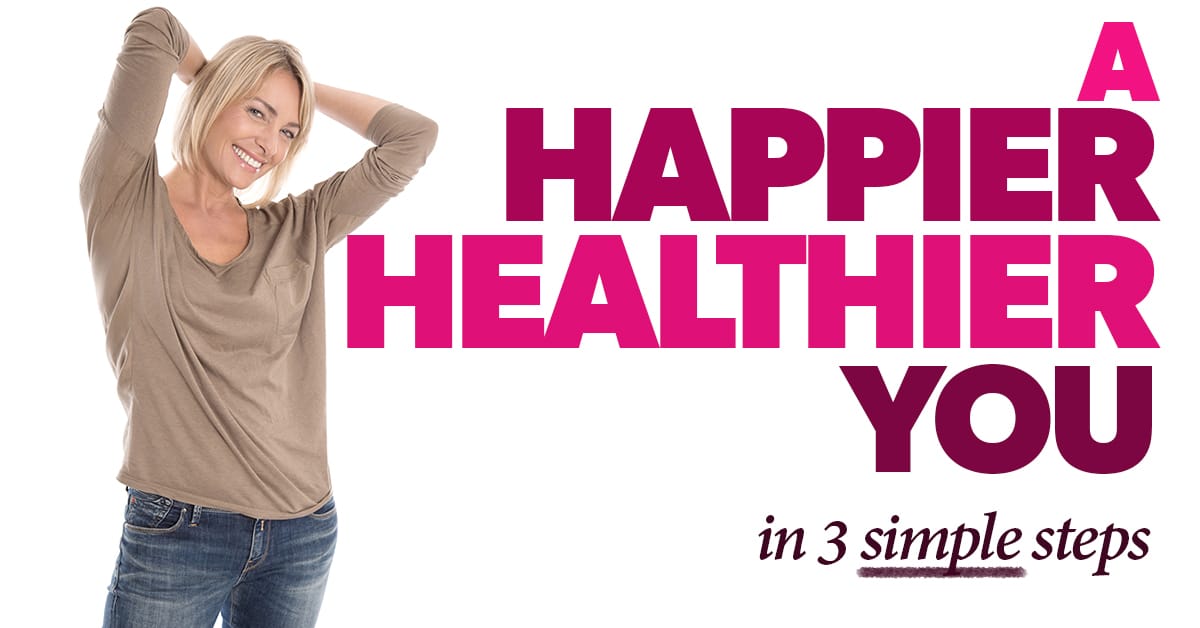Finding moments of peace and tranquillity in our fast-paced, constantly connected world can be challenging. Meditation offers a respite from the noise and chaos, allowing us to reconnect with our inner selves and cultivate a sense of calm.
However, achieving a clear and focused mind for meditation can be easier said than done.
This article will explore practical techniques and strategies to help you clear your mind for meditation. Whether you are a beginner or have been practicing it for a while, these simple yet powerful tips will guide how to create an optimal mental environment for your meditation practice.
Connecting Mind and Body
Connecting the mind and body before meditation is important because it helps us be fully present and focused during our practice.
When we take a moment to connect with our body, we become aware of how it feels and any sensations or tensions we may be carrying. This awareness helps us relax and release any physical or mental stress we might be experiencing.

By connecting with our body, we ground ourselves in the present moment. This means we’re not thinking about the past or worrying about the future. Instead, we bring our attention to the here and now, which is where meditation happens.
Connecting our mind and body also helps us understand the connection between our thoughts, emotions, and physical sensations. When we pay attention to our bodies, we notice how our thoughts and emotions affect us physically.
For example, we might realize that stress makes our shoulders tense or that excitement makes our hearts beat faster. This awareness allows us to better observe and manage our thoughts and emotions during meditation.
When we connect our mind and body, we can relax more deeply. We let go of any tension we might be holding, which prepares us for a calm and peaceful meditation session. By bringing our mind and body into harmony, we create a more enjoyable and fulfilling meditation experience.
In simple terms, connecting our mind and body before meditation helps us be present, relax, understand how our thoughts and emotions affect us physically, and have a better meditation experience overall.
Clearing Mind Before Meditation
Clearing your mind before meditation can be beneficial as it sets a conducive mental state for deep focus and introspection. Here are some strategies to help clear your mind:
Physical Exercise
Engaging in physical activity can help clear your mind because it requires you to focus on your movements, thus diverting your attention from your thoughts. It also releases endorphins, hormones that create happiness and euphoria, reducing stress and anxiety.
Breathing Exercise
Deep, controlled breathing can help lower your heart rate, reduce tension, and calm your mind. This involves inhaling slowly through your nose, holding your breath for a few seconds, then exhaling slowly through your mouth.
A popular technique is the “4-7-8” breathing method, where you inhale for 4 seconds, hold for 7 seconds, and exhale for 8 seconds.
Journaling
By putting your thoughts on paper, you can offload some mental clutter and reduce the “mental chatter” that might interfere with your meditation. You can use this time to write about anything on your mind, your worries, things you’re grateful for, or describe how you’re feeling.
Mind Dump
By putting your thoughts on paper, you can offload some mental clutter and reduce the “mental chatter” that might interfere with your meditation. You can use this time to write about anything on your mind, your worries, things you’re grateful for, or describe how you’re feeling.
Visualization
By creating a calming, peaceful image, you can prepare your mind for the tranquillity that meditation seeks to cultivate.
This could be a favorite place you’ve visited, a peaceful scene from nature, or a wholly imagined place. The key is to imagine it in as much detail as possible, immersing yourself in this tranquil setting.
Body Scan
A body scan involves mentally scanning and consciously relaxing each part of your body.
You can start at your toes and work your way up, or start at the top of your head and work your way down. As you focus on each part of your body, imagine releasing any tension or stress it might be holding.
Listen to Calm Music or Sounds
Give your mind something gentle and soothing to focus on; music or ambient sounds can help distract from any intrusive thoughts. It could be classical music, soft instrumental tracks, nature sounds like birdsong or rain, or guided meditation tracks.

Mindful Eating or Drinking
When you eat or drink mindfully, you bring your full attention to the experience, savoring the flavors, textures, and smells. This helps get your mind into the present moment, a key element of meditation.
It can also be a mini-meditation, priming your mind for the more extended meditation session.
Digital Detox
Turning off your digital devices, or putting them on silent or in another room, can help create a more peaceful environment for meditation. It eliminates the possibility of being disturbed by calls, messages, or notifications, allowing you to focus entirely on your meditation.
Set an Intention
Setting an intention is like creating a roadmap for your meditation session. Your intention can be something specific you want to focus on, like cultivating compassion or gratitude, or something more general, like maintaining focus on your breath.
By setting an intention, you’re signaling to your mind that this is important and deserves your full attention.
Benefits of Clearing Your Mind Before Meditation
Meditation is a well-established practice that promotes mindfulness, reduces stress, and fosters a stronger connection with one’s self. But what are the benefits of this pre-meditation routine? Let’s take a look:
- Enhances Focus and Concentration: Clearing your mind before meditation allows you to direct your focus inward, enabling a more profound, more productive meditation session. Decluttering your thoughts helps eradicate distractions and sharpens your ability to concentrate on your breath or chosen focus point.
- Cultivates Mindfulness: The act of consciously clearing your mind encourages mindfulness. By acknowledging and setting aside your thoughts, you’re practicing the core tenets of mindfulness: staying present, non-judgmentally, and at the moment. This aids in fostering a more conservative perspective in your everyday life.
- Reduces Anxiety and Stress: Just as meditation can alleviate stress and anxiety, so can mental decluttering. By consciously distancing yourself from worries, tasks, or concerns before meditation, you allow yourself to become more calm, facilitating more profound relaxation.
- Boosts the Quality of Meditation: A calm, clear mind is more receptive to meditation. By clearing out thoughts and distractions beforehand, you make space for the meditation practice to unfold more effectively.
This leads to higher quality sessions, characterized by deeper states of relaxation and greater mental clarity post-meditation.
- Promotes Emotional Regulation: Clearing your mind before meditation helps you become more aware of your emotions without getting entangled. Objectively observing your feelings aids in emotional regulation, fostering greater emotional intelligence in the long run.
- Facilitates Better Sleep: Clearing your mind before bedtime meditations can significantly enhance sleep quality. Reducing mental chatter and creating a state of relaxation set the stage for a peaceful transition into sleep.
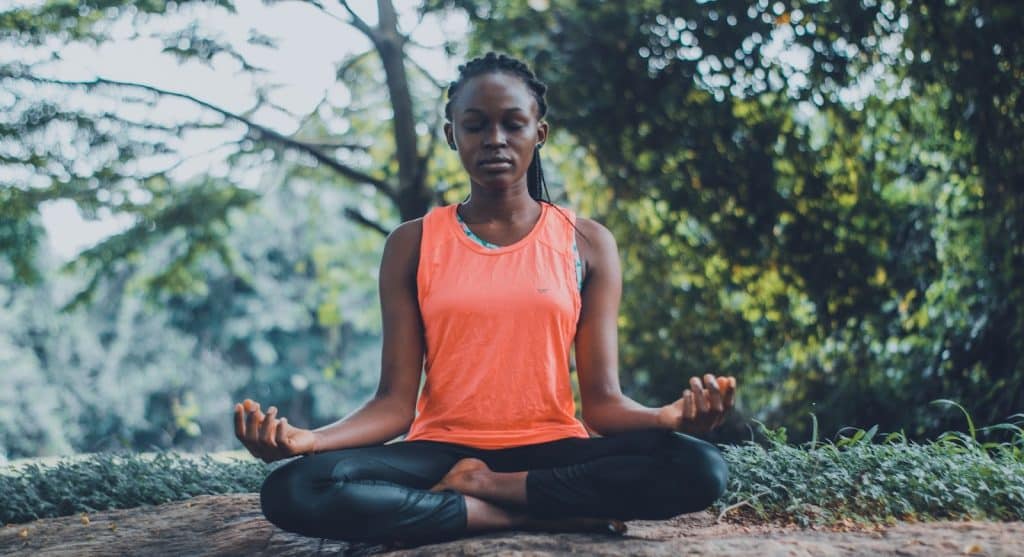
Things To Keep in Mind While Meditating
When practicing meditation, it can be helpful to keep the following tips in mind:
- Choose a quiet environment where you can sit comfortably without distractions. This will help you focus and relax more easily.
- Sit with your back straight but relaxed. You can sit on a cushion or chair or lie down if necessary. The key is to find a position that allows you to be alert and at ease.
- One of the most common meditation techniques is to focus on your breath. Pay attention to the sensation of each inhalation and exhalation, allowing your breath to anchor your attention and bring you into the present moment.
- Instead of getting frustrated, cultivate an attitude of kindness and self-compassion. Each time you notice your mind has wandered, gently bring it back to the present moment.
Beginner in Meditation? Here’s What You Need
While meditation itself requires minimal equipment or supplies, there are a few things that can enhance your practice. Here are some items you might find helpful:
- Comfortable clothing: Wear loose, non-restrictive clothing that allows you to sit or move comfortably. This helps prevent any distractions or discomfort during your meditation session.
- Meditation cushion or mat: While not necessary, a meditation cushion or mat can provide additional support and comfort during seated meditation. Cushions are designed to elevate your hips and promote proper posture, while mats provide a designated space for your practice.
- Quiet environment: Find a quiet place where you can minimize external distractions. If you’re unable to find complete silence, you can use earplugs or play soft instrumental music or nature sounds to create a calming atmosphere.
- Timer or meditation app: Setting a timer can help you establish a specific duration for your meditation session. You can use a physical timer or choose from numerous meditation apps available on smartphones, which often provide customizable options and soothing sounds.
- Optional props or aids: Some people find it beneficial to incorporate additional props or aids into their meditation practice. This can include a meditation shawl or blanket to provide warmth and comfort, an eye mask or cushion to block out light, or even essential oils or incense to create a pleasant scent in your meditation space.
- Journal or notepad: Keeping a journal nearby can be helpful for reflecting on your meditation experiences or jotting down any insights or observations that arise during or after your practice.
Frequently Asked Questions (FAQs)
Here are a few frequently asked questions about clearing our minds before meditation.
1. How long should I take to clear my mind before I start meditating?
No fixed duration works for everyone—it depends on your personal needs and the mental clutter you’re dealing with. Some may find a few minutes of focused breathing sufficient, while others might require more time with techniques like journaling or mind dumping. The key is to take as long as needed until you feel ready to meditate.
2. What should I do if I can’t clear my mind before meditation?
Remember, the aim isn’t to empty your mind but rather to reduce the intensity of distractions. It’s perfectly normal to have thoughts pop up as you prepare to meditate, and try focusing on your breath or bodily sensations if you find it challenging.
If thoughts persist, acknowledge them without judgment and gently guide your attention back to your focus point.
3. Is it necessary to clear your mind before every meditation session?
While it’s beneficial to clear your mind before each session, it’s not a strict requirement. The necessity may vary depending on your current mental state and the type of meditation you’re practicing. The goal is to create a mindful, relaxed state, and if you can do this without a formal mind-clearing routine, that’s perfectly fine.
Conclusion
Clearing the mind before meditation is an essential practice for achieving a state of deep relaxation and inner peace.
Individuals can effectively release mental clutter and distractions by creating a serene environment, practicing mindfulness, engaging in relaxation techniques, setting intentions, and approaching the process with patience and compassion.
This allows for a more precise and focused meditation experience, reducing stress and enhancing overall well-being. Embracing the journey of clearing the mind before meditation can open the door to a more harmonious and balanced life.
